What's New
Displaying results 2521 - 2530 of 4914
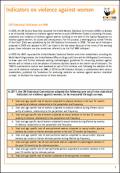
Resource | Publications,
'kNOwVAWdata is a UNFPA initiative to support and strengthen sustainable regional and national capacity to measure violence against women (VAW). Over three-and-a-half years, from mid-2016 through the end of 2019, with support from the Australian Department of Foreign Affairs and Trade (DFAT), the kNOwVAWdata initiative will build on work already being supported by UNFPA to conduct VAW surveys and analysis in in the Asia-Pacific region. The initiative will also ensure sustainability, including by strengthening capacities of national institutions to collect and analyze data, in particular by using internationally recognized, best practice survey methodologies.
In 2006, the UN General Assembly requested the United Nations Statistical Commission (UNSC) to develop a set of possible indicators on violence against women to assist UN Member States in assessing the scope, prevalence and incidence of violence against women, building on the work of the Special Rapporteur on violence against women, its causes and consequences. For this purpose, a working group named 'Friends of the Chair' (FoC) was established by the UN Statistical Commission in 2008. The core set of indicators proposed in 2009 and adopted in 2011 are listed in the box below. Because of the name of the working group, these indicators are also sometimes referred to as the 'FoC VAW indicators'.

Resource | Reviews and Snapshots,
kNOwVAWdata is a UNFPA initiative to support and strengthen sustainable regional and national capacity to measure VAW. Over three-and-a-half years, from mid-2016 through the end of 2019, with support from the Australian Department of Foreign Affairs and Trade (DFAT), the kNOwVAWdata initiative will build on work already being supported by UNFPA to conduct VAW surveys and analysis in in the Asia-Pacific region. The initiative will also ensure sustainability, including by strengthening capacities of national institutions to collect and analyze data, in particular by using internationally recognized, best practice survey methodologies.
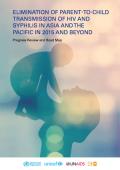
Resource | Publications,
The dual goals of elimination of parent-to-child transmission (EPTCT) of HIV and syphilis areaspirational, although challenging for countries to achieve. The adoption of these goals – and for some countries triple elimination with the inclusion of screening for the hepatitis B virus (HBV) – has been instrumental to efforts to meet MDG 6. They are also important to realizing the health-related targets of the Sustainable Development Goals (SDGs), adopted by the international community in September 2015.
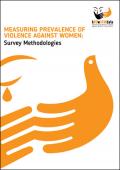
Resource | Publications,
'kNOwVAWdata is a UNFPA initiative to support and strengthen sustainable regional and national capacity to measure Violence against Women (VAW). Over three-and-a-half years, from mid-2016 through the end of 2019, with support from the Australian Department of Foreign Affairs and Trade (DFAT), the kNOwVAWdata initiative will build on work already being supported by UNFPA to conduct VAW surveys and analysis in in the Asia-Pacific region. The initiative will also ensure sustainability, including by strengthening capacities of national institutions to collect and analyze data, in particular by using internationally recognized, best practice survey methodologies.
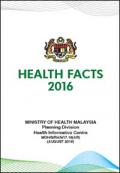
Resource | Fact Sheets,
The report provides health information on maternal and child health attendances, sexually transmitted diseases, infectious diseases, etc.
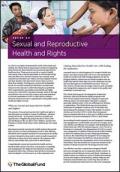
Resource | Publications,
In order to maximize investments for AIDS, tuberculosis and malaria, the Global Fund is supporting countries in integrating interventions for these diseases into sexual and reproductive health services. These services provide a country’s health care system with a critical opportunity to reach people living with and affected by the three diseases. For example, many countries use antenatal care visits to provide pregnant women and their families with insecticide-treated nets to protect them from malaria. Treating men, women and transgender people for sexually transmitted infections is an important element in the response to AIDS. Reaching key populations with comprehensive and quality sexual health and rights services is a critical HIV prevention strategy. And it is through reproductive care services that women can access treatment to prevent transmission of HIV to their unborn children. Everyone deserves access to comprehensive and quality sexual health and rights services.

Resource | Publications,
The year 2015 has been an interesting and challenging one for the Ministry of Health and Medical Services. The Ministry reviewed its performance over the last 5 years and developed its National Strategic Plan 2016-2020, which was launched in December 2015.
The Annual Report 2015 highlights the key achievements and challenges which include a comprehensive health outcome report that demonstrates Ministry‟s performance against key health indicators. There has been progress made in some areas and the challenges faced in progressing in other areas are also acknowledged, as health status is affected by many factors some of which are beyond the health sector.
There is a need for a whole of society approach to address the growing burden of NCDs and MoHMS has been promoting and strengthening the Wellness Approach to health over the past year and will continue to do so. The Ministry continues to take a broader approach to handling challenges and is continuously working on improving efficiency and engaging with key partners in extending health service delivery.

Resource | Publications,
In 2015, Youth LEAD as a advocacy- oriented youth-led regional network facilitated a series of capacity building activities in several counties. Take the New Gen training as an example; in 2015, the trainings continued to rollout in Cambodia, Mongolia, and the Philippines with hundreds of young key populations from grassroots movements being invited to learn and partake in these sessions.
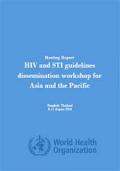
Resource | Publications,
The World Health Organization (WHO) Headquarters and Regional Offices for Eastern Mediterranean, South-East Asia and the Western Pacific organized a four-day “HIV and STI guidelines dissemination workshop in Asia and the Pacific” in Bangkok, Thailand from 8 to 11 August 2016. The main objective of the workshop was to provide Member States and partners a better understanding of the technical elements of WHO HTS 2015 and ART 2016 guidelines and support national adaptation and implementation of recommendations in the guidelines.
Consolidated guidelines for antiretroviral drugs, key populations, strategic information, HIV Testing services and STI are intended to simplify guidance and harmonize all guidelines based on a public health approach to reach the 90-90-90 global targets by 2020 and the Sustainable Development Goal of ending AIDS and STI epidemics by 2030.

Resource | Publications,
This is the first round of the IBBS survey conducted among Female Injecting Drug Users in Kathmandu Valley (Kathmandu, Lalitpur and Bhaktapur districts). A total of 160 females of 16 years and above who had been injecting drugs for at least three months preceding the survey were recruited randomly using network sampling method.
The fieldwork for the survey was conducted from April to July 2016. The survey was undertaken primarily to track the prevalence of HIV, Syphilis, Hepatitis B and Hepatitis C infection among Female Injecting Drug Users. The aim of the survey was to find out the baseline status of comprehensive knowledge of HIV/AIDS, risky sexual and injecting behaviors among Female Injecting Drug Users, their exposure to various HIV/AIDS prevention, treatment, care, and support programs. The information was collected using tablet-based structured questionnaire, and the prevalence of HIV, Syphilis, Hepatitis B and Hepatitis C was tested by using rapid kits.





